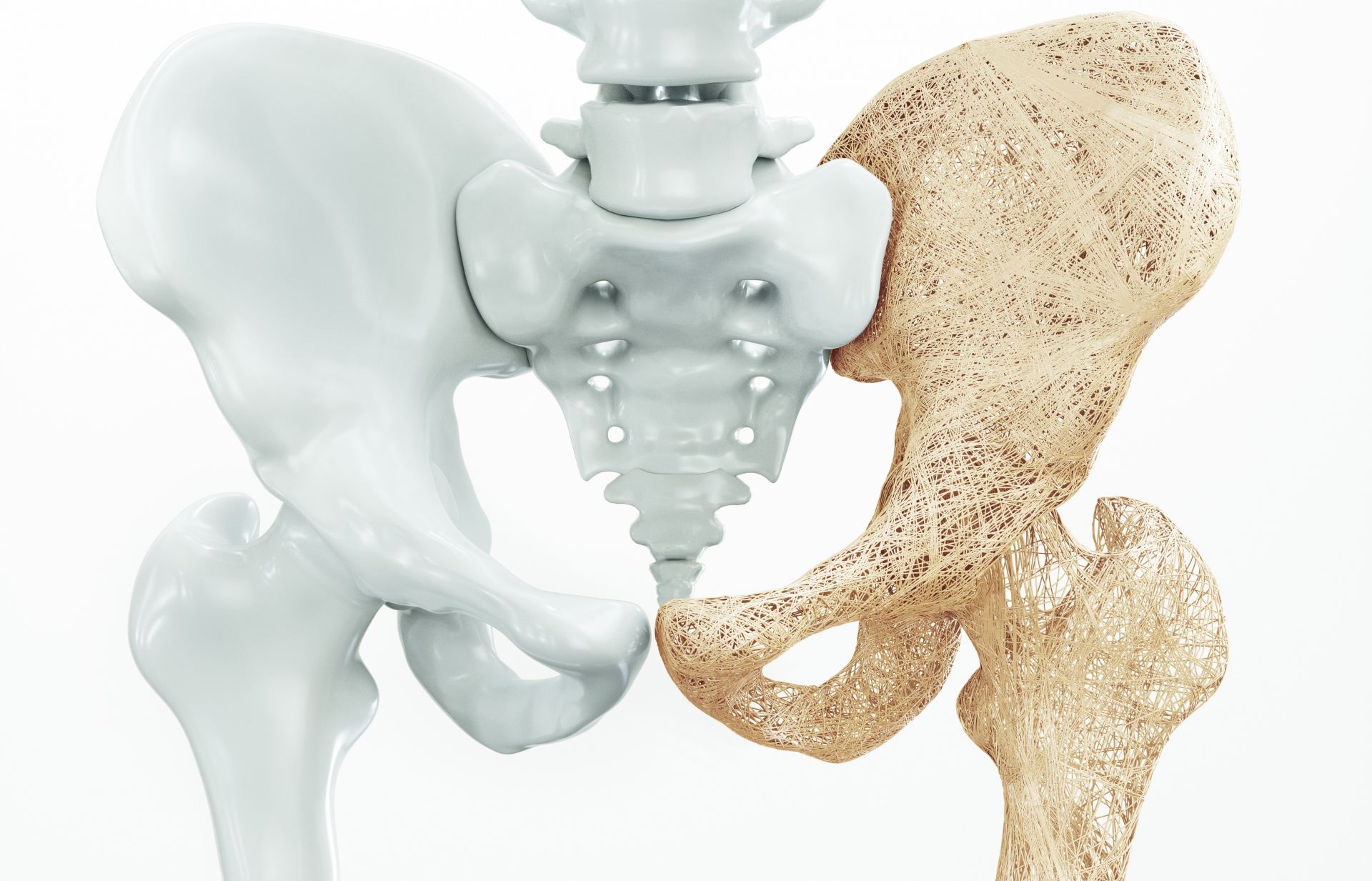Written by Regina Enriquez and Edited by Josephine Chan

Osteoporosis is a bone disease characterized by a considerable loss in bone density and bone strength. According to a 2002 report by the National Osteoporosis Foundation (NOF) and data collected from 1988 to 1994, around 10 million Americans aged 50 years or older had osteoporosis, and an additional 34 million had low bone mass [1] [2]. This is problematic because weakened bones are more susceptible to fracture from minor injuries, particularly in the hip, spine, or wrist [3]. However, bone degradation is not immediate; it is gradual, and those affected are asymptomatic until serious bone fracture is detected [4].
Bone mass and bone density are both important factors that could contribute to osteoporosis. Individuals obtain the maximum amount of bone in their body by 25 years old, and after 35, bone loss linearly decreases by 0.3% to 0.5% each year [1]. In fact, approximately 55% of the U.S. population aged 50 years and older have low bone density [1]. Women are especially affected because they lose bone at an earlier age and at a faster rate than men [5]. Medications used to treat cancer, asthma, seizures, and rheumatoid arthritis can also contribute to bone loss [6]. By 2025, osteoporosis has been predicted to be responsible for more than one million fractures and $25.3 billion in medical costs annually [3].
Fortunately, early signs of osteoporosis can be detected during annual physical exams when doctors check for changes in weight, height, posture, and gait. The U.S Preventive Services Task Force Routine recommends osteoporosis screening for women 65 years and older. Bone mineral density (BMD) testing is typically conducted via x-ray scans. Test results are then compared to the average bone density of healthy bone from others of similar age, sex, and race [6]. On a microscopic level, a healthy bone has a honeycomb-like structure, whereas osteoporotic bones are more porous due to larger holes and spaces in their structure [3]. Those with osteoporosis experience chronic lower back pain and height loss and usually have a curved posture [1]. Recurring spinal fractures may lead to bone deformations, which could compromise breathing [1]. Additionally, hip fractures could be fatal; about 20% of seniors who break their hip die within a year after fracture because of irreversible damage and surgical complications [3]. People with osteoporosis can prevent falls by using a cane or walker, wearing non-slip shoes, avoiding slippery sidewalks, being aware of their surroundings, and walking in well-lit areas [6].
However, osteoporosis can be treated or prevented through proper nutrition, lifestyle changes, and certain medications. A healthy diet rich in calcium, vitamin D, and protein minimizes bone loss and maintains bone strength. On the other side, excessive consumption of alcohol and frequent smoking have a negative impact on bone health. Take charge of your overall health by visiting the doctor regularly. Although drugs for lowering risk of fracture exist, there are many unmet needs for fracture care. An article from Therapeutic Advances in Musculoskeletal Disease suggests that there is a lack of primary prevention, adequate measurements of bone strength, and optimal treatments [4]. In addition to individual efforts to improve bone health, strides are being taken to advance treatment and care for patients afflicted by osteoporosis. According to the National Health Institute, osteoporosis research should prioritize understanding current medications and identifying key risk factors for bone fracture. Research studies on bone composition, genetic factors, and treatments related to osteoporosis are currently being conducted [1].
References:
- Shiel Jr., William C. “Osteoporosis: Treatment, Symptoms, Causes.” Edited by Catherine B Driver, MedicineNet, 8 Sept. 2020, www.medicinenet.com/osteoporosis/article.htm. Accessed 10 April 2021.
- Wright, N.C., Looker, A.C., Saag, K.G., Curtis, J.R., Delzell, E.S., Randall S, Dawson-Hughes B. (2014). The Recent Prevalence of Osteoporosis and Low Bone Mass in the United States Based on Bone Mineral Density at the Femoral Neck or Lumbar Spine. Journal of Bone and Mineral Research, 29: 2520-2526.
- “What Is Osteoporosis and What Causes It?” National Osteoporosis Foundation, 16 Feb. 2021, https:/ www.nof.org/patients/what-is-osteoporosis/. Accessed 10 April 2021.
- Lems, Willem F., Hennie G. Raterman. “Critical Issues and Current Challenges in Osteoporosis and Fracture Prevention. An Overview of Unmet Needs.” Therapeutic Advances in Musculoskeletal Disease, 2017. 299–316,
- Alswat, K.A. “Gender Disparities in Osteoporosis.” Journal of clinical medicine research 9:382-387
- “Osteoporosis.” National Institute of Arthritis and Musculoskeletal and Skin Diseases, U.S.Department of Health and Human Services, Oct. 2019, www.niams.nih.gov/health-topics/osteoporosis/syndicate. Accessed 10 April 2021.
